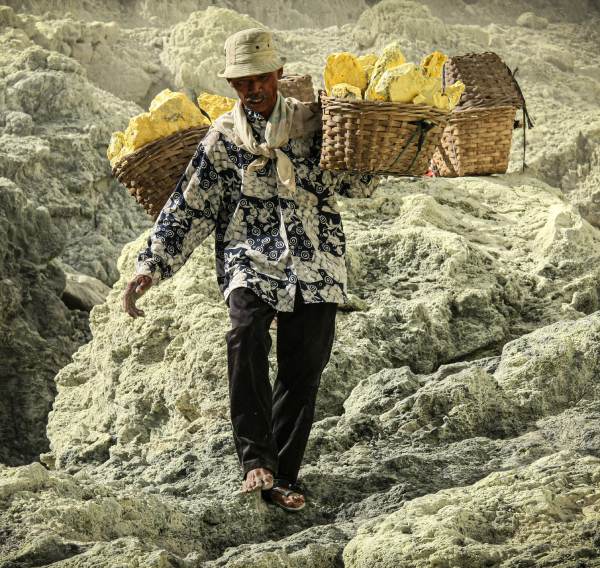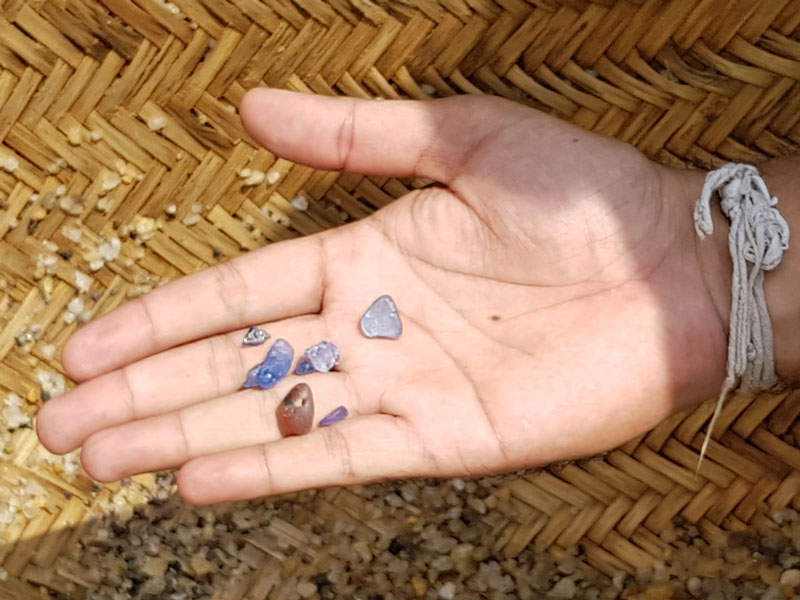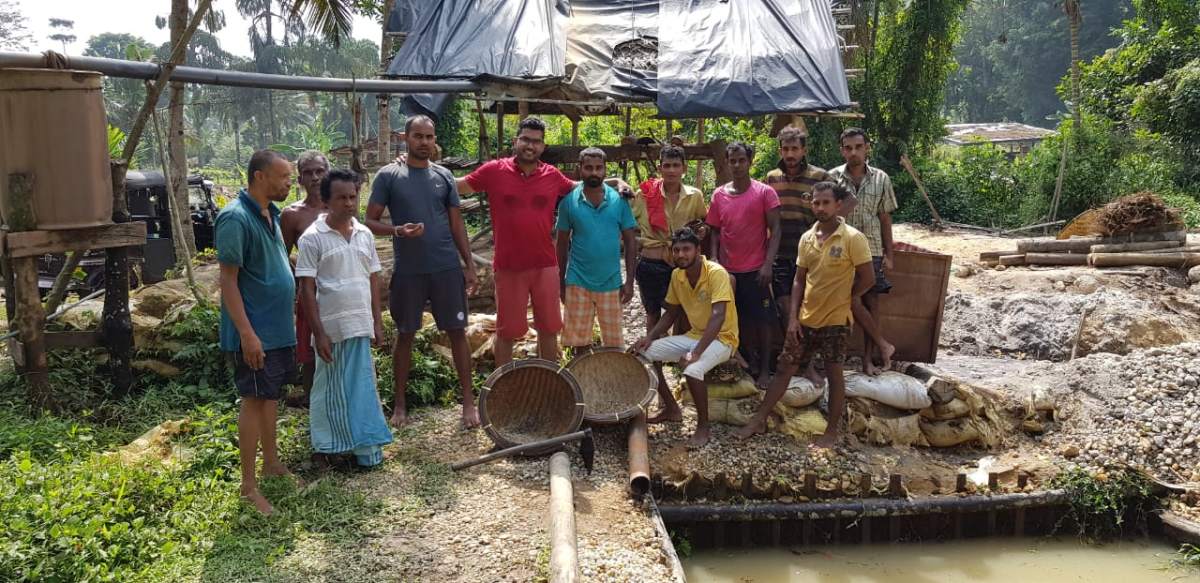Knowledge
06.09.2023 Sustainability in gemstones: Fair, environmentally friendly & transparent?
Not everything that shines is fair and ethically sound. Gemstones are also pleasing to the eye, but hardly anyone knows what it looks like behind the scenes: How and under what conditions are the precious stones mined? What about social responsibility and the global impact of gemstone mining on the environment? Important questions at a time when sustainability and environmental awareness have evolved from a trend to a necessity.

How sustainable is gemstone mining?
First of all, an all-clear: Unlike the mining of metals, no acids or mercury are used in the extraction of gemstones. Child labor is also not an issue in gemstone mining – simply for the reason that gemstones mostly come from vertical deposits (i.e. they are no longer at their original place of origin, but have been carried on by erosion or sedimentary shifts). The work there consists of carrying large sacks of clay, for which – apart from the ethical reasons – children are completely unsuitable.
In addition, as far as the impact on the environment is concerned, a great deal has happened in gemstone mining in recent years: In most countries, large-scale mining with heavy machinery is prohibited, the pits drilled during secondary mining are backfilled, fast-growing wood that can be easily reforested is used to support the walls, and trees that have been cut down must be replanted.

In contrast, large machines are still used for diamond mining, and mining and trading are dominated by a few large players. In the mining of colored gemstones, on the other hand, local cooperatives are predominantly relevant. Minerals are mined by small private companies, cooperatives or local family associations, thus supporting the people living and working in the respective country.
There are also increased efforts in several countries to extend the value chain. In Sri Lanka and Burma, for example, the government has mandated that gemstones found locally must also be cut in the country.
The word “blood diamonds” also comes up frequently in connection with sustainability and ethics in gemstones. Not only since the Hollywood thriller “Blood Diamond” hit the cinemas has the trade in blood diamonds become a socio-political issue. Blood diamonds in general are stones that are mined in crisis regions and used to finance armed conflicts. In order to stop this, the Kimberly Process was established in 2003, whose participants have committed themselves to comply with certain conditions and regulations when trading in gemstones.
A major ecological advantage of gemstones is that they have no expiration date. Unlike fast fashion, for example, precious stones last forever. You don’t have to replace them and can enjoy them for a lifetime.
There is still room for improvement in terms of greater transparency and social security for miners. But here, too, the situation has improved considerably in recent years.
Tip: In our The Natural Gem Podcast, TNG founder Dr. Thomas Schröck talks about ethical investing in gemstones in episode 16.

What are sustainable and ethical gemstones?
Sustainable and ethical gemstones are those that are mined, processed and sold under conditions that respect and protect both the environment and the people involved.
Environmentally friendly mining
Since no chemicals are generally used in the mining of gemstones, it is fair to say that the extraction of gemstones is environmentally sustainable. Neither rivers and soils are polluted nor the health of miners is endangered. After mining, the mine areas are reforested and recultivated.
Fair working conditions
As already mentioned, child labor does not occur in gemstone mining anyway. In addition, Sri Lanka in particular is exemplary (and not only) from a social point of view: there, gemstone mine operators are responsible for the social welfare of their employees and their families. They pay medical and hospital bills and provide a pension fund. The monthly wage of a worker in the gemstone mines is twice the average salary in Sri Lanka.
Transparent trade & traceability
With gemstones, the origin is much easier to trace than with gold. This helps to ensure that the jewels do not come from conflict zones and have been fairly sourced. For about 95% of all colored gemstones, gemologists or gemological laboratories can determine where the stones come from based on the formation conditions, trace elements and inclusions. Determining the origin of diamonds is more difficult: they consist of carbon – and this is the same everywhere. Although tiny trace elements in a diamond can provide clues as to its origin, it is not possible to make a definite assignment.


How to recognize sustainable gemstones?

While certifications for sustainable mining already exist for precious metals, such reliable proof is still lacking for the extraction of gemstones. Competent gemstone dealers therefore sell their jewels only with internationally recognized, independent certificates from gemmological laboratories. These include not only information such as gemstone name, mineral group, color, weight and treatments, but also the origin of the stone if required. In any case, it is advisable to ask specific questions when buying gemstones and to choose a supplier who inherently cares about transparency and sustainability.
If you want to make sure that everything from mining and processing to transport is ESG-compliant, you should choose gemstones from Sri Lanka. Industrial mining has been banned there since 2017, there are no large corporations (many mines are family-owned), the added value remains in the country, and holes created during mining must be filled with dewy material.

Ethics and sustainability at The Natural Gem
The Natural Gem is particularly concerned to offer only gemstones that are mined, cut and traded under ESG-compliant conditions. At TNG, we do a lot of things that are not yet legally binding: We only offer gemstones of ethically correct origin, mined under fair and ecological conditions, and from mines whose owners put the well-being of all involved first. It goes without saying that we do not trade with Russia and Afghanistan.
We visit the mines we cooperate with ourselves and convince ourselves of their work and working conditions. Accordingly, we can guarantee that the colored gemstones from The Natural Gem are not only of the highest quality, but also fair and sustainable.



